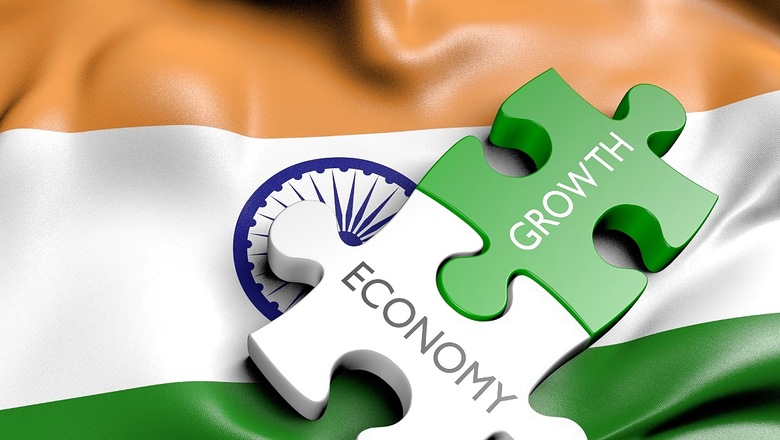
views
Written by R P Gupta:
India’s combined debt-to-GDP ratio is projected to be 83.2 per cent and is expected to peak at 83.8 per cent by FY 2027. It is necessary to stabilise the country’s debt. Subsidies are there to support the poor. Infrastructure spending in the commercial and social sectors is also crucial. In such circumstances, it is indeed a great challenge for both governments to reduce the debt-to-GDP ratio. This must be resolved by using all policy tools combined with financial innovations.
To bring down the debt levels, raising taxes is challenging as it will further add to the burden of the common man. The investment rate can’t be reduced as that will slow down economic growth. Hence, there are steps that can be taken:
Lower Interest Rates
There is a need for lower interest rates, that will boost capital in companies, thus raising investment. Lower interest rates will will also reduce the debt-servicing cost. Currently, the inflation in India is not due to “demand-push” but rather it is “cost-push” inflation. Inflation can be decreased by reducing the cost of basic inputs such as capital, energy, logistics, and minerals. Eventually, this shall boost private investment and exports.
Disinvestments
Secondly, there are more than 400 public sector enterprises (PSEs) owned by both governments in various fields such as railways, NHAI, power generation and transmission, ports, airports, mining, insurance, finance, and many others. These may be corporatised and listed on the stock exchange, as was recently done with LIC. By doing this, the governments can raise funds by selling shares among the public in tranches while retaining ownership. This will be the right choice compared to total disinvestment and/or leasing out. By this, part of the government debt can be swapped with equity.
The booming capital market shall facilitate such partial disinvestment. All these PSEs have huge surplus land and other intangibles; their value shall be unlocked. These PSUs should be pursued for sharing the investment burden in their core competence areas and allied fields, besides infrastructure. Particularly, the railways has huge potential to invest in increasing goods traffic and earning huge profits. Its investment needs shall be met through a mix of debt and equity. By this, the logistics cost shall be reduced, benefiting the economy.
Forming JVs
Likewise, there are many avenues for unlocking growth potential without budgetary support. Eventually, this will also give a kick-start to the private investment cycle. New listed companies may also be incorporated in joint ventures with states and/or reputed corporates for infrastructure spending by infusing equity and raising debt from banks and the bond market with sovereign guarantees.
Regulatory Easing
For creating jobs, the manufacturing and construction sectors need regulatory easing. The MSME sector, particularly small and micro units, need tax incentives as they can provide a large number of jobs. Likewise, some schemes may be formulated for farmers to convert farming into a profitable business. By this, financial distress shall be reduced. Thereafter, the subsidy burden can be moderated in subsequent budgets.
Structural Reforms
It’s been more than 30 years of the 1991 reforms. Now, India needs another series of structural reforms exceeding those of 1991. Business and taxation laws must be simplified to motivate entrepreneurs for new businesses and business expansions. Facilitation must co-exist with regulation. The growth model must be based on investment and export-led growth. It must deliver inclusive and higher GDP growth in a consistent manner. That will provide solutions to all problems. The existing financial savings rate is not adequate for financing investment needs. Ways and means may be designed to keep the Rupee stable; this will attract global capital to meet investment needs.
Credit Regulation
Banks must reduce personal loans, except for housing and education, and increase commercial credits to finance business expansion needs. The capital market should facilitate the listing of small and mid-sized corporates. However, composite planning should be done for five years after evaluating investment needs in various areas.
For such radical changes, unity and team spirit within the country at the Centre and state levels are most crucial. Thereafter, resolving all problems shall be a trivial issue.
(The author is an industrialist and author of ‘Turn Around India’)
















Comments
0 comment